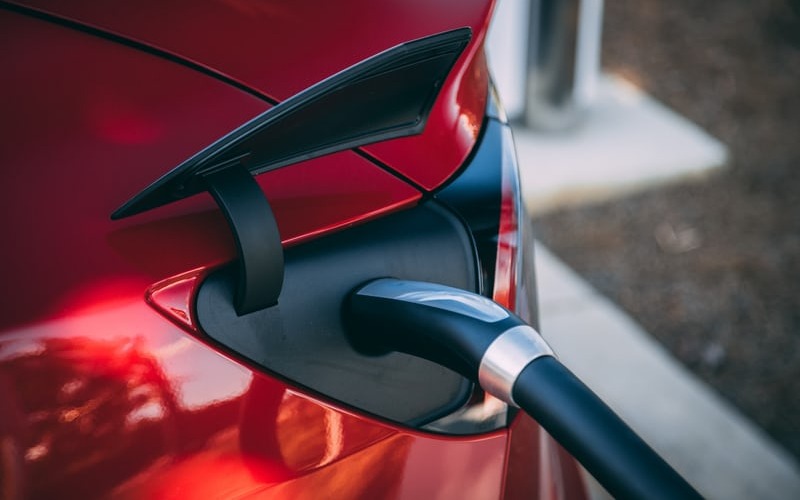Like smartphones, electric vehicles (EV) have a rechargeable lithium battery. But as you’ve probably noticed with your phone after a year or two, these batteries tend to deteriorate. Of course, there are some differences between your tiny phone battery and a huge EV battery that can weigh more than 500kg, but the concept remains the same.
That, and a few other reasons are why you should approach buying a used EV with caution. However, it’s like any used car really - do all the checks and balances and you could save a ton over a new vehicle. So, read on to find out the considerations you’ll need to make when looking at a used EV.
Should I buy a used electric vehicle?
Before jumping into the cheapest Tesla and charging off into the sunset, it’s important to do some research, and first consider if a used EV is right for you. Some considerations to make are:
Used electric car batteries
The batteries in electric vehicles aren’t too dissimilar to what you find in your smartphone - just on a larger scale. And like smartphones, they deteriorate over time.
Generally, it’s estimated that an EV battery can last for 10-20 years before it’s deteriorated enough that it needs to be replaced. Mileage is also not often a factor in batteries, unlike internal combustion engines. Heat, age, condition and charging habits could all play a bigger role.
A study by Electrek.co in the US assessed more than 6,000 EVs and found those with lithium-ion batteries lost about 2.3% of their capacity every year. Those that were liquid-cooled lost capacity at a slower rate.
- For reference, Tesla covers its batteries for eight years or 240,000km for the Model X and Model S, with a minimum 70% retention i.e. lost 30% of its capacity.
- The Nissan LEAF is covered for eight years or 160,000km, with less than 9 out of 12 bars' capacity the threshold for replacement.
If your car battery is out of warranty, then you could be in for a big bill. Also check that the warranty transfers over to the new owner. Tesla chief Elon Musk estimates a replacement battery module could cost as much as USD $5,000-$7,000, and that’s just for one module - EVs can have multiple modules.
So, if you’re buying a used EV that’s say, five years old, chances are you could still be getting most of the battery capacity. However, it’s hard to get a gauge on the previous owner’s usage habits. Did they drive all the time in a really hot climate? Did they have poor charging habits, such as constantly letting the charge level dip below 20%? All of these things can compromise battery life over time and add up in big battery replacement costs long-term.
Other technology
Electric vehicles are often very technology-heavy in the interior. This includes fancy entertainment units, heads up displays, electric seats, digital instrument clusters, fancy transmission levers and more. The long-term reliability of such electronics remains to be seen. Just like that old iPhone 4 sitting in your drawer inoperable, all of that technology in your EV has the potential to malfunction.
Ever taken notice of the Tesla entertainment screen? It’s 12.3 inches, which is massive compared to other cars. It’s also not just an entertainment screen. A lot of the vehicle controls and monitoring systems are managed through there, meaning if your screen goes black, a lot of your car’s ability to actually do its main job of driving is compromised. Of course, we aren’t singling out Tesla here - other cars carry the same potential technology problems too - petrol/diesel ones included.
General wear and tear
One of the main benefits of an electric car is that it doesn’t have an internal combustion engine (ICE). This is stating the obvious but ICEs carry with them a range of extra maintenance items.
Maintenance parts you won’t need to deal with on an EV include: oil and fuel filters and changes, spark plug replacements, emission checks, exhaust maintenance, and timing belt/chain replacements.
More moving parts equals more maintenance, but that doesn’t mean an electric car doesn’t require maintenance at all. One of the biggest maintenance items is going to be your tyres - a Tesla Model S has a 21-inch rim diameter, meaning you’ll need very large (and potentially expensive) tyres. A quick check of tyre retailers' sites reveals the cheapest 21” tyres are still around the $200 mark, however more well-renowned brands are up around the $400 mark.
Other, cheaper cars likely come with smaller and thus cheaper tyres, but they still need to be replaced every so often at some expense. Two other important items are brakes and their fluid, and coolant, which will still require upkeep.
Electric car depreciation
We’ve covered depreciation rates more broadly, but electric vehicles can depreciate even quicker than their internal combustion engine counterparts. This is because technology in EVs has come in leaps and bounds in the past few years. We’ve looked at Redbook.com.au’s price guides for private sales at the high end to determine various vehicles' depreciation rates over 1-3 years. They are:
- 2017 Tesla Model S P100D: Price new - $232,402, Price now - $105,600. Depreciation rate: 54.56%
- 2017 Tesla Model S 75D: Price new - $126,777, Price now - $86,200. Depreciation rate: 32.01%
- 2019 Nissan LEAF: Price new - $49,990, Price now - $36,500. Depreciation rate: 26.99%
Keep in mind, this is for private sales at the high end and are a guide only. It also assumes you paid full retail price, rather than haggled with a dealer. To fetch the best price at sale you usually need to have lower kilometres than other listings, a documented service history and a vehicle in good condition, and in an inoffensive colour. Trade-in values could be much lower, too.
Savings.com.au's two cents
Buying a used electric vehicle could present a great-value buying opportunity. New ones, especially fancier models, can cost more than $100,000. And in three years, they can lose a third or more of their value.
However, like any car, there’s checks you’ll need to do first. One of the main concerns is the battery’s longevity. While many manufacturers have a generous battery warranty upwards of eight years, who knows how well the previous owner treated it. No matter how trustworthy they might seem, there still might be some question marks over the battery.
Luckily, EV batteries can last ten or more years before they need to be replaced. However, that replacement cost can be astronomical if not done so within warranty. So, our two cents would be - if you are thinking of buying a used EV - buy the newest one you can afford. That way, you might be able to avoid a lot of the costs and problems associated with battery degradation.

.jpg)

 Denise Raward
Denise Raward
 Harry O'Sullivan
Harry O'Sullivan

 Jacob Cocciolone
Jacob Cocciolone
 Harrison Astbury
Harrison Astbury

